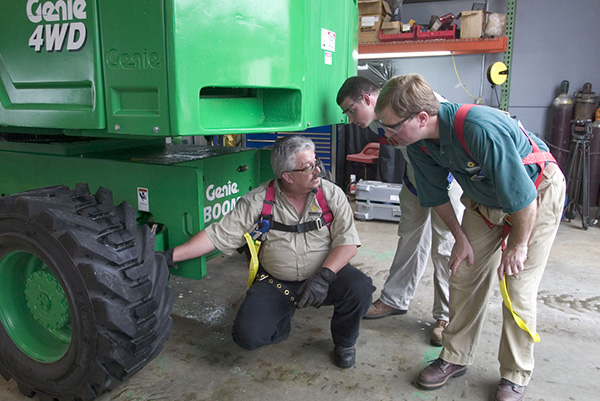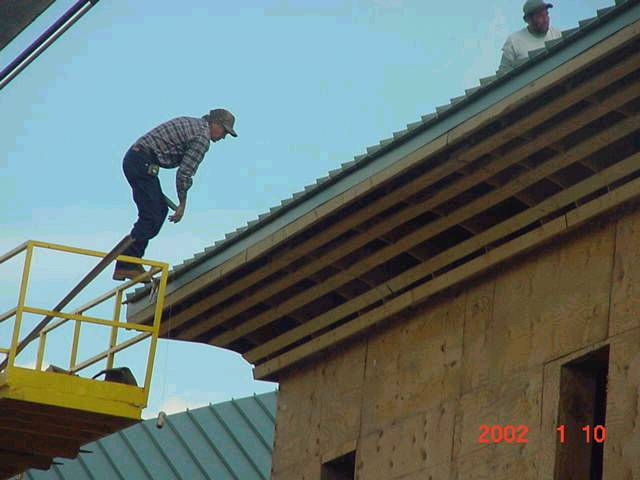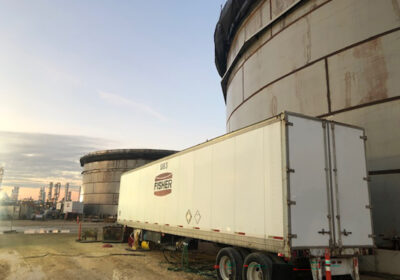5 WAYS TO KEEP A LIFT SAFE – FOR TANK CONSTRUCTION & MORE

Today we welcome Anna van Erven of Sunbelt Rentals, Inc. Anna joins us to discuss a key element of most tank construction projects – aerial lift safety. We use aerial lifts in many of our field erected tank projects; getting men and materials several stories of the ground is often part of our tank building process. We also employ aerial lifts when we are working on storage tank roofs, roof seals, tank appurtenances or other aspects of storage tank maintenance, repair and construction. Whether you’re working with storage tanks or other types of construction projects, aerial lift safety can’t be an afterthought. Anna shares some important tips for operating and using ariel lifts on the jobsite:
In our day-to-day lives, accidents happen. We spill coffee, we drop keys. But in the construction industry we work tirelessly to make sure that, in fact, accidents don’t happen, because even the smallest of accidents can have the largest of consequences. Accidents that result from working with aerial equipment are a leading cause of construction fatalities. When working from great heights, with complicated machinery, and in close proximity to live wires, aerial lift operators are surrounded by risk. Companies and their employees strive to mitigate and eliminate these risks and keep employees safe by offering quality, up-to-date safety training, machines and safety equipment. At Sunbelt, we take safety one step further by encouraging our employees to “Take 10 Seconds for Safety.” For just 10 seconds, we encourage employees to check their surroundings and equipment and ensure both are ready for use. While it might take more than 10 seconds to read this article, perhaps it is worth reading over these facts about aerial safety in an effort to promote a culture of safety.

CHECK YOURSELF, CHECK YOUR EQUIPMENT
Safety not only includes wearing the proper safety equipment, but also checking that the machinery you will operate is safe.
Vehicle Components:
- Fluids (oil, hydraulic, fuel, coolant)
- Wheels and tires
- Battery and charger
- Gauges, lights, backup alarms
- Steering and breaks
Lift Components:
- Emergency controls
- Warnings and operational, instructional and control markings
- Fasteners and locking pins
- Cable and wiring harness
- Outriggers, stabilizers and structures
- Loose or missing parts
- Guardrail systems
KNOW THE HAZARDS
Fall protection is at the forefront of every operator’s mind when using aerial lists. But the immediate surroundings can pose other risks that are important to foresee. Below are the common hazards associated with aerial lifts.
- Falling from elevated levels
- Objects falling from lifts
- Tip-overs
- Ejections from the lift platform
- Structural failures, or collapses
- Electric shock
- Entanglement
- Contact with objects, ceilings and overhead objects

TRAIN AND RETRAIN
While safety retraining is important for all of us, it is a must for employees that have encountered the following,
- An accident during aerial lift use
- Discovery of workplace hazards
- Operating a type of lift they are unfamiliar with
BEWARE THE FALL
Of the various precautions aerial lift operators must consider, fall protection is of the utmost importance. Many falls involving aerial lifts are a result of improper use of the lift or failure to wear the right safety equipment. It’s important to understand the common causes of falls, and the role safety equipment plays in preventing them.

Common Reasons for Falls
- Occupant is not wearing proper safety equipment and is not attached to an anchorage point
- Occupant is ejected from the lift platform when struck by another vehicle or object, or when the equipment moves suddenly
- Occupant climbs on guardrails
- Occupant overreaches the edge of the platform
Therefore, do not:
- Overextend your body outside the basket or platform
- Sit on or climb to the edge of the platform
- Remove guardrails or leave gates open during use
- Use unauthorized guardrails as an anchor
- Connect to adjacent poles or structures
- Exceed the capacity limits
- Carry objects larger than the platform
- Override hydraulic, mechanical or electrical safety devices

KICK COMPLACENCY
We can check the equipment we use and the safety equipment we wear, but the greatest risk we must be aware of is complacency. Even the most trained experts are prone to accidents; no one is immune. That is why Sunbelt encourages aerial lift operators and all employees to “Take 10 seconds for Safety” to check themselves and their surroundings. Establishing a schedule for consistent brief but thorough safety checks, and creating some accountability among your team for those safety checks, can go a long way toward preventing complacency.
For more information about storge tank construction, visit:
For more information about Ariel Lifts and Ariel Lifts Safety, visit:
Click here to read more of our blogs






